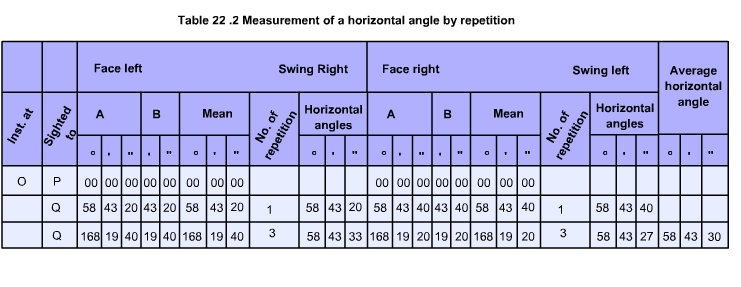To represent the direction of a line, the horizontal angle of the line from a reference line is to be measured. The steps required to be adopted are as follows:
-
Two points one on each of the lines, say P and Q, are to be marked.
-
A transit theodolite is to be set at the point of intersection of the lines, say at O. Initially, the instrument is in the face left condition and its temporary adjustment is to be done over the point O.
-
Both the lower and upper plate main screws are to released and get the vernier A set to 0° (or 360°) mark on the main scale. After clamping the upper main screw, index of vernier A is to be brought exactly to the zero of the main scale using the upper plate tangent screw.
-
At this stage the reading of the vernier B should be 180°.
-
Swing the telescope in the horizontal plane and point it to the left station, say P. Tighten the lower plate clamp screw, and bisect the signal at P exactly using the lower plate tangent screw. Record the readings in the form of Table 22.1.
-
Loosen the upper plate main screw and turn the telescope the signal at Q is sighted. Tighten the upper clamp screw and bisect the ranging pole at Q exactly using the upper plate tangent screw.
-
Read both the verniers A and B and record the readings. The reading of the vernier A is the angle POQ. The vernier B gives the value of angle POQ after deducting from it 180°. The mean of two values of the angles obtained from the verniers A and B is the required angle P'O'Q'.
-
Change the face of the instrument to the face right by transiting the telescope and swinging it by 180°.
-
Repeat steps 3 to 8 and determine another value of the angle P'O'Q'.
-
The mean of the face left and face right observations is the final required angle P'O'Q'.
